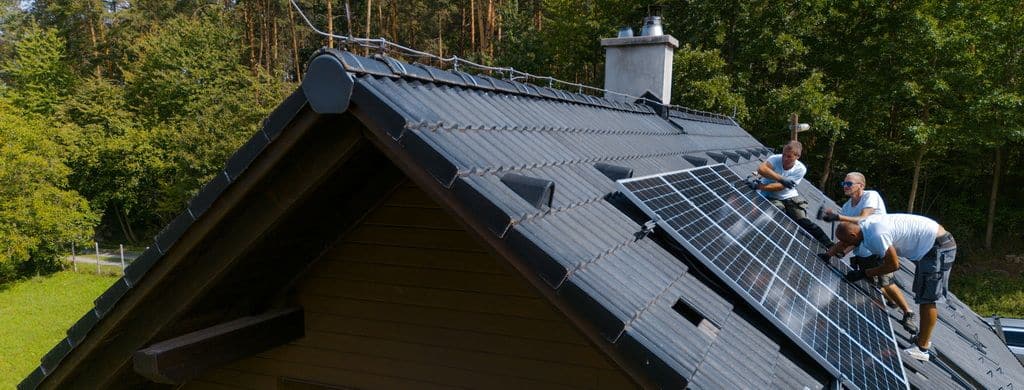- Calculate your energy consumption: Gather your electricity bills from the past 12 months. Look for the total kilowatt-hours (kWh) used per month or per year. Calculate your average monthly energy consumption by dividing the total kWh used in a year by 12. This will give you an idea of your monthly energy usage.
- Consider your location and climate: The amount of sunlight your location receives has a significant impact on your solar panel system’s performance. In general, sunnier locations with clear skies will yield more solar energy. You can use resources like the National Renewable Energy Laboratory’s (NREL) PVWatts Calculator to estimate solar potential for your location.
- Determine system size: Divide your average monthly energy consumption by your location’s average monthly solar production (from the PVWatts Calculator or other sources).This will give you an estimate of the solar system size you need in kilowatts (kW). Keep in mind that this is a rough estimate and does not account for factors like shading, roof orientation, and system efficiency.
- Account for system efficiency: Typically, solar panel systems have an efficiency of 75-85%. This means that only a small percentage of the sunlight can be used for energy.To account for this, divide the estimated system size by the efficiency factor (0.75-0.85) to obtain the adjusted system size.
- Check the available space on your roof or installation site: Check the available space on your roof or installation site to ensure the required number of solar panels. Consider factors like roof orientation (south-facing is best), tilt angle, and shading from trees or buildings. If your site has limitations, you may need to adjust the system size or consider alternative mounting options like ground-mount systems or solar trackers.
- Plan for future energy needs: If you expect your energy consumption to increase in the future, such as a growing family or an electric vehicle, factor this into your calculations. You can either install a larger system upfront or ensure that your system is designed to be easily expanded in the future.
- Consult a professional: It is always recommended to consult a solar installer or professional to get an accurate system requirements and energy needs. They can perform a detailed site analysis, help you choose the best equipment, and guide you through the installation process.
To further evaluate your energy needs for a solar panel system, consider these additional steps and factors:
- Evaluate your energy efficiency:
Before sizing your solar panel system, it’s wise to assess your home’s energy efficiency. By making energy-efficient upgrades or changes, you can reduce your overall energy consumption and potentially reduce the size of the solar panel system you need. Some efficiency measures include:
- Insulating your home
- Installing energy-efficient windows and doors
- Upgrading to energy-efficient appliances
- Switching to LED lighting
- Using smart thermostats to optimize heating and cooling
- Determine the type of solar panels:
There are different types of solar panels available in the market, each with varying efficiencies and price points. Monocrystalline panels are the most efficient but also more expensive, while polycrystalline panels are less efficient and more affordable. Thin-film panels are the least efficient but can be a good choice for certain applications, such as flexible installations or low-cost projects. Choose the solar panel type that best suits your budget and efficiency requirements.
- Consider your utility’s net metering policy:
Net metering allows you to send excess solar energy back to the grid, offsetting your electricity costs. However, the specific policies and compensation rates vary by utility and region. Research your local net metering policies to determine how they may affect your solar panel system’s size and your potential savings.
- Estimate your solar panel system costs and savings:
Calculate the approximate cost of your solar panel system by multiplying the average cost per watt in your area by the adjusted system size (in kW).This will give you a rough estimate of the total system cost. Also, research available incentives, tax credits, and rebates that may reduce your upfront costs. To estimate your potential savings, multiply your average monthly energy consumption by your utility’s electricity rate and compare it to the estimated monthly solar production.
- Evaluate battery storage options:
Adding a battery storage system to your solar panel installation allows you to store excess solar energy for use, like at night or during cloudy days, when your panels are not producing.This can increase your energy independence and reduce your reliance on the grid. Consider the costs, benefits, and sizing of a battery storage system when evaluating your overall solar energy needs.
- Maintenance and lifespan:
When evaluating your energy needs for a solar panel system, consider the ongoing maintenance and expected lifespan of the system components. Solar panels typically have a lifespan of 25-30 years and may require minimal maintenance. However, other components like inverters may need to be replaced after 10-15 years. Factor in these costs and timelines when planning your solar panel system.
By carefully evaluating these factors and consulting with solar professionals, you can make a well-informed decision on the best system size, type, and configuration for your home or business and accurately determine your energy needs.

